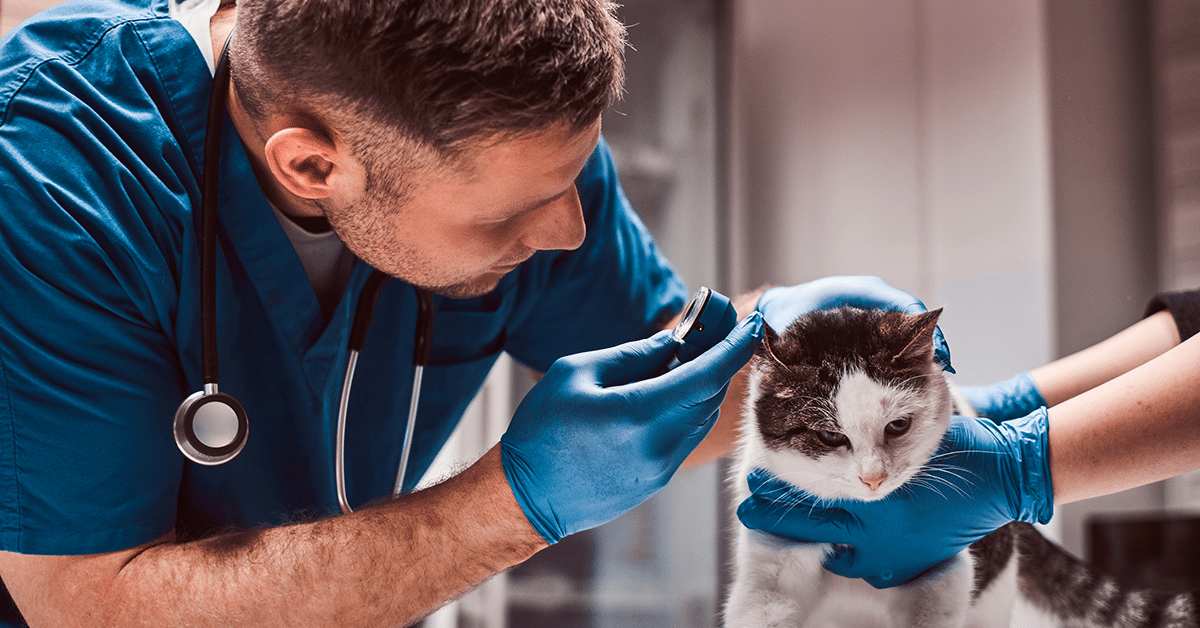
Veterinarians are graduating with more debt than ever before. The latest data from the American Veterinary Medical Association (AVMA) found that among 2018 graduates with debt, 44% had borrowed $100,000 or more over the cost of attendance, plus interest. And the real mean debt of all 2018 graduates was $143,111, up from $133,086 in 2017 — an increase of over $10,000 in just one year.
It’s no wonder that so many veterinarians are searching for veterinary student loan repayment choices that will help relieve the burden — including Public Service Loan Forgiveness (PSLF).
PSLF can be a great path for attorneys, teachers or human doctors. But there are several potential problems for veterinarians using PSLF. Here’s what you need to be aware of.
Related: Veterinarians Are Treated Horribly Under Student Loan Rules
PSLF doesn’t combine well with USDA veterinary loan repayment
If you’re looking for creative repayment options for your Veterinariae Medicinae Doctoris (V.D.M.) student loans, the two most popular are PSLF and U.S. Department of Agriculture (USDA) Veterinary Student Loan Repayment, also known as the Veterinary Medicine Loan Repayment Program (VMLRP).
With PSLF, you’ll need to work for an eligible employer, like a nonprofit clinic or for the Food and Drug Administration (FDA) as a food inspector. Then you'll need to make 10 years of payments on an income-driven repayment (IDR) plan. After that, you can apply for complete tax-free forgiveness on your remaining balance.
With the VMLRP program, the USDA will pay up to $25,000 of your student loans each year. In exchange, you'll need to work in an area that has a veterinary shortage for three years.
VMLRP is taxable under IRS rules
But it’s important to note that VMLRP payments are reported as taxable income. This would cause your monthly payments on an IDR plan to rise. Diana, a veterinarian and Student Loan Planner® reader, is a USDA employee who’s working toward PSLF herself.
She explained that for many vets who plan to use PSLF, the VMLRP program could do more harm than good.
“Assuming they’re working towards PSLF, they will now end up having higher monthly payments on a student loan that will ultimately be forgiven anyway,” she said.
Diana brings up a great point. The USDA Veterinary Loan Repayment program could be a good move for some veterinarians. But you should probably stay away if you’re working toward PSLF.
PSLF can make USDA scholarships virtually worthless
The USDA is also funding a program called the Adel A. Malak Scholarship Program.
With this program, veterinary students can receive up to $15,000 of scholarships per year. In exchange, they must commit to work after graduation as a Food Safety and Inspection Service (FSIS) food inspector for the same amount of years that they were covered by the scholarship.
But for vets who plan to use PSLF, Diana doesn’t feel the scholarships will make much of a difference. “What (the) USDA doesn’t realize is that for many of these students, the difference between graduating with $200K in loans versus $260K in loans is meaningless, because they’re probably going to use PSLF anyways,” she said.
Plus, she points out that even if you don't plan to pursue PSLF, the USDA scholarship might not be a smart move since the award might make you ineligible for other types of cash-recruitment bonuses.
The overall point? If you’re going to pursue PSLF, most other forms of veterinary student loan relief become less valuable. And, at times, they can even be detrimental.
PSLF jobs may be less fulfilling
Getting into vet school is tougher than medical school. Plus, you have to learn how to diagnose illnesses on multiple anatomies. If you’ve gone through all that hard work and financial sacrifice, you must love animals.
You wouldn’t subject yourself to all that difficulty if you didn’t have a genuine passion for animal care. You just want to help animals stay healthy, and that’s an awesome calling. However, many of the jobs that qualify for PSLF may not line up well with that calling.
It’s unlikely that very many students are daydreaming about inspecting meat, poultry and processed egg products at USDA facilities during their four grueling years of vet school.
Yes, nonprofit shelters do count toward PSLF as well. But many veterinarians don’t find it nearly as fulfilling to work in these environments as private clinics. Shelter staff are often overworked, and giving every animal the attention they need is difficult. It can be a depressing environment, especially for people who love animals so much.
Student Loan Planner® has found that many of the veterinarians we work with don’t make it the full 10 years with PSLF employment. In fact, we’ve seen many vets leave for a more-fulfilling work environment after only two years.
Related: Why Most Veterinarians Don’t Get PSLF
Does this mean that no vets should pursue PSLF? No. But you’ll want to make sure that you’re OK with the kind of jobs that will qualify.
You may feel like working in an animal clinic would fit your personality. If so, then pursuing PSLF makes a lot of sense.
Also, if you don’t mind spending the first 10 years of your vet career as a food inspector, PSLF could save you a ton of money. Afterward, you could be in a better financial position to start your own private clinic.
And even if you don’t think PSLF is for you, you could still enroll in an IDR plan and work toward IDR forgiveness. Or, if your students loans are less than twice your income, you may want to consider student loan refinancing.
If you’d like help deciding which veterinarian student loan repayment strategy would be best, one of our consultants would love to help. Book a consultation today!
Refinance student loans, get a bonus in 2024
| Lender Name | Lender | Offer | Learn more |
|---|---|---|---|

|
$500 Bonus
*Includes optional 0.25% Auto Pay discount. For 100k or more.
|
Fixed 5.24 - 9.99% APR*
Variable 6.24 - 9.99% APR*
|
|

|
$1,000 Bonus
For 100k or more. $300 for 50k to $99,999
|
Fixed 5.19 - 10.24% APPR
Variable 5.28 - 10.24% APR
|
|

|
$1,000 Bonus
For 100k or more. $200 for 50k to $99,999
|
Fixed 5.19 - 9.74% APR
Variable 5.99 - 9.74% APR
|
|

|
$1,050 Bonus
For 100k+, $300 for 50k to 99k.
|
Fixed 5.44 - 9.75% APR
Variable 5.49 - 9.95% APR
|
|

|
$1,275 Bonus
For 150k+, $300 to $575 for 50k to 149k.
|
Fixed 5.48 - 8.69% APR
Variable 5.28 - 8.99% APR
|
|

|
$1,250 Bonus
For 100k+, $350 for 50k to 100k. $100 for 5k to 50k
|
Fixed 5.48 - 10.98% APR
Variable 5.28 - 12.41% AR
|

